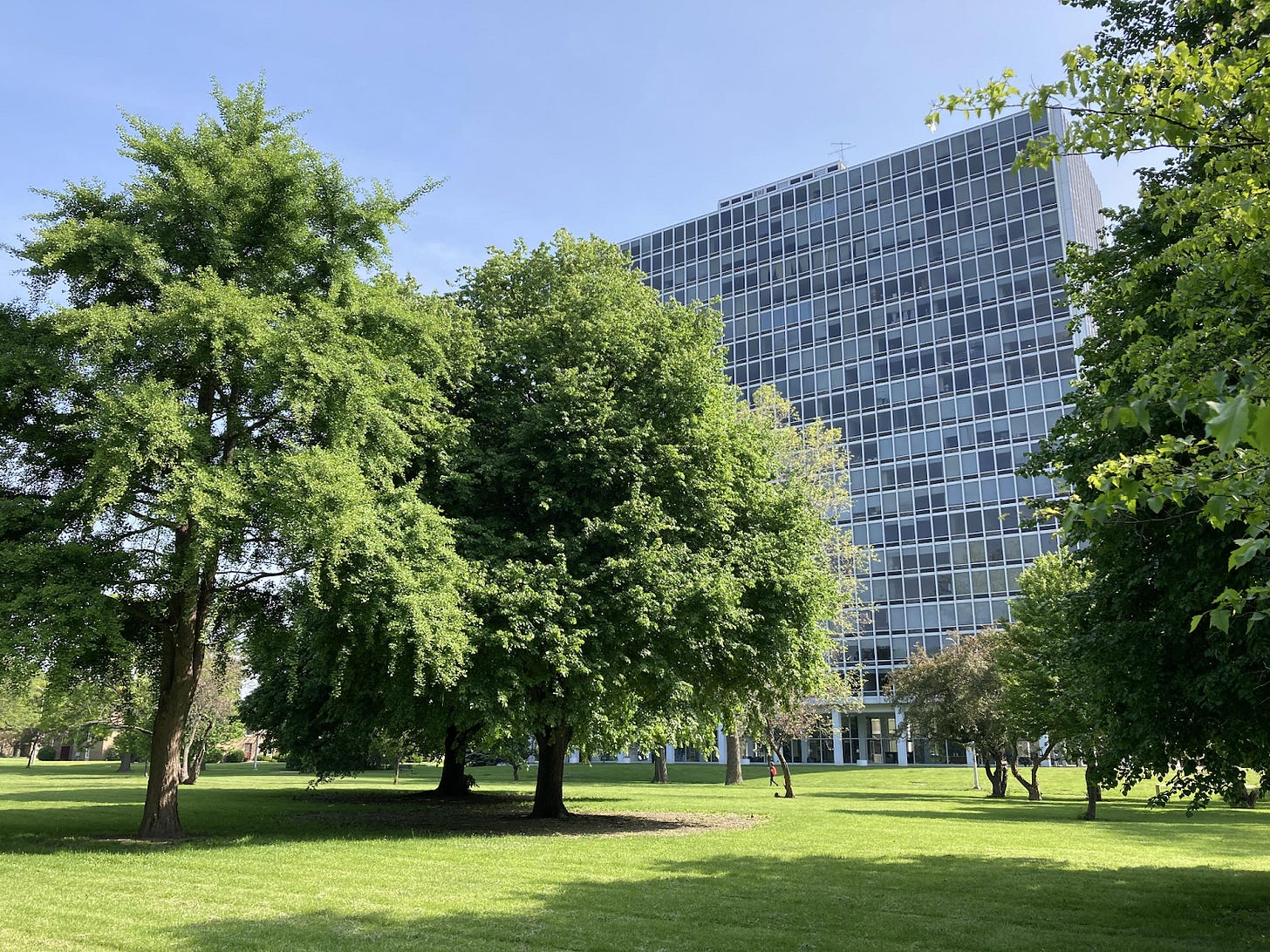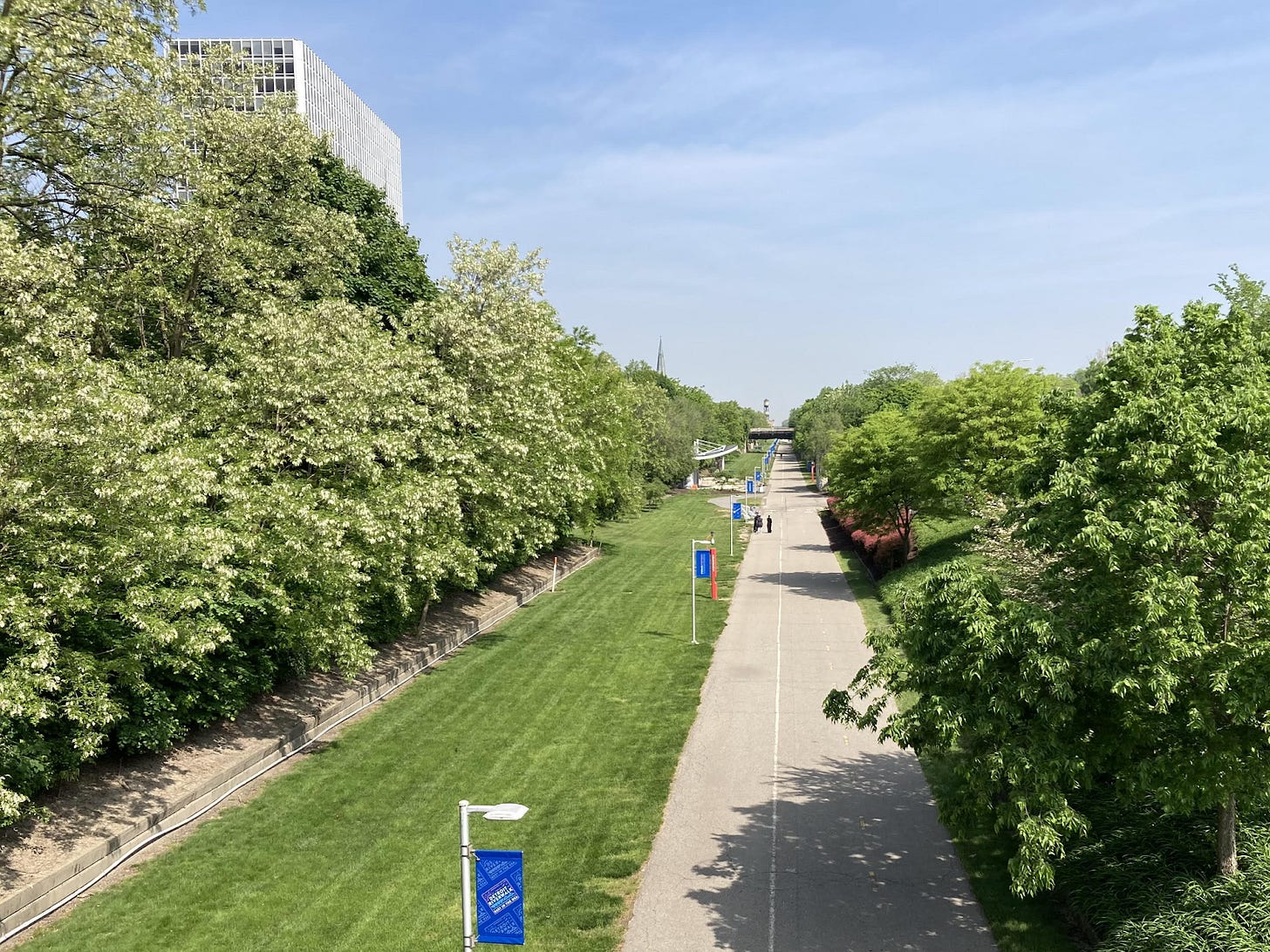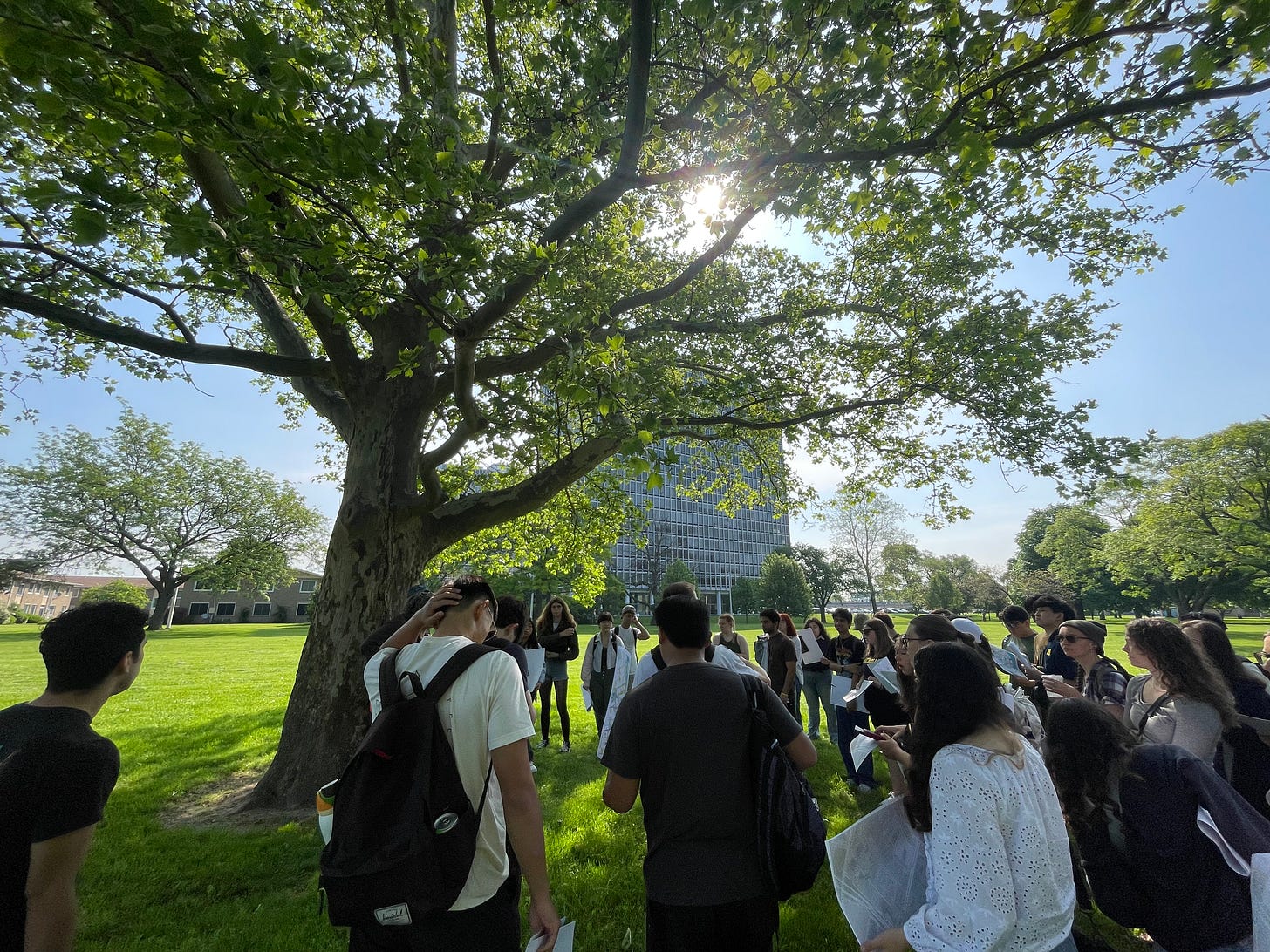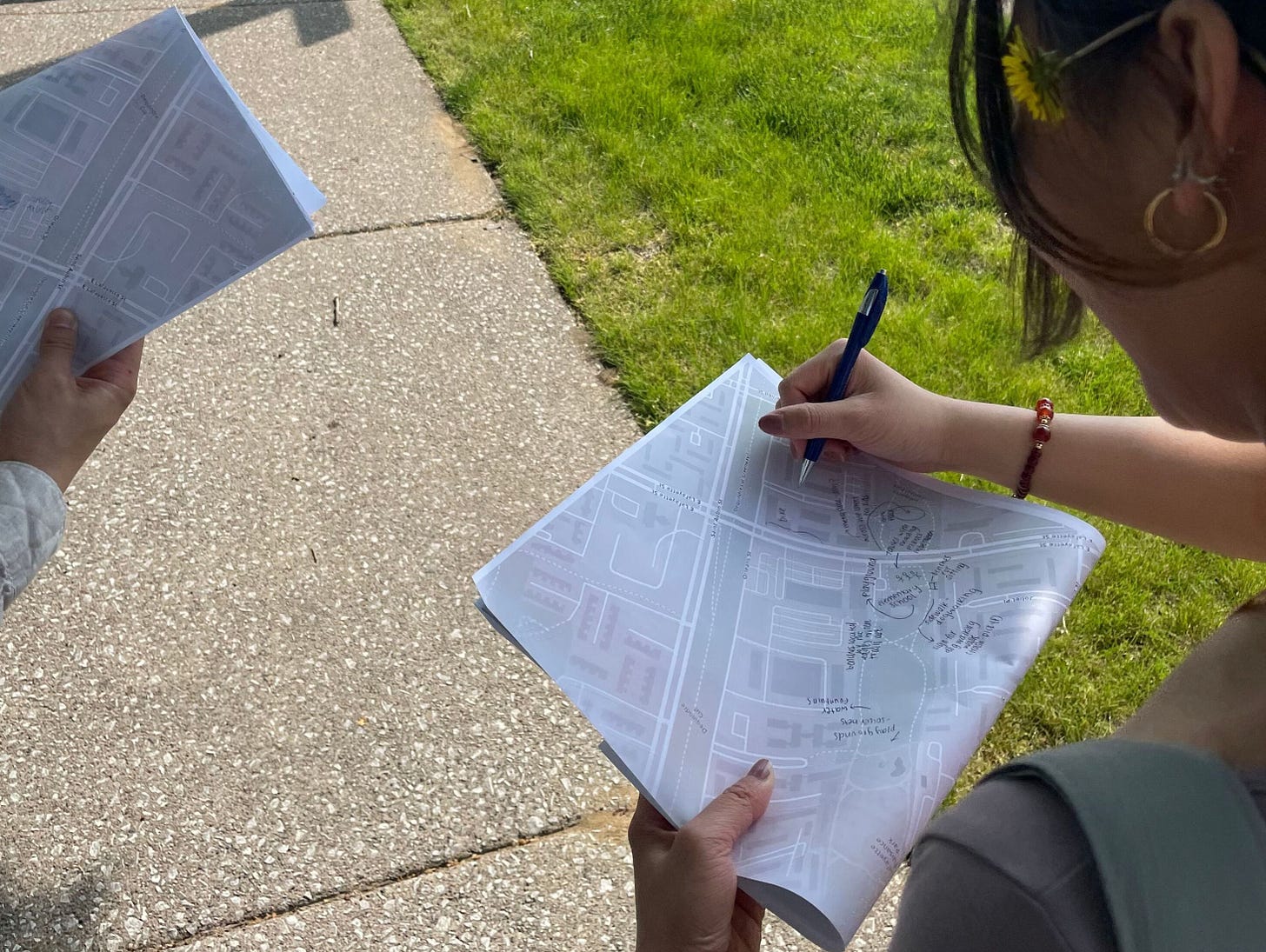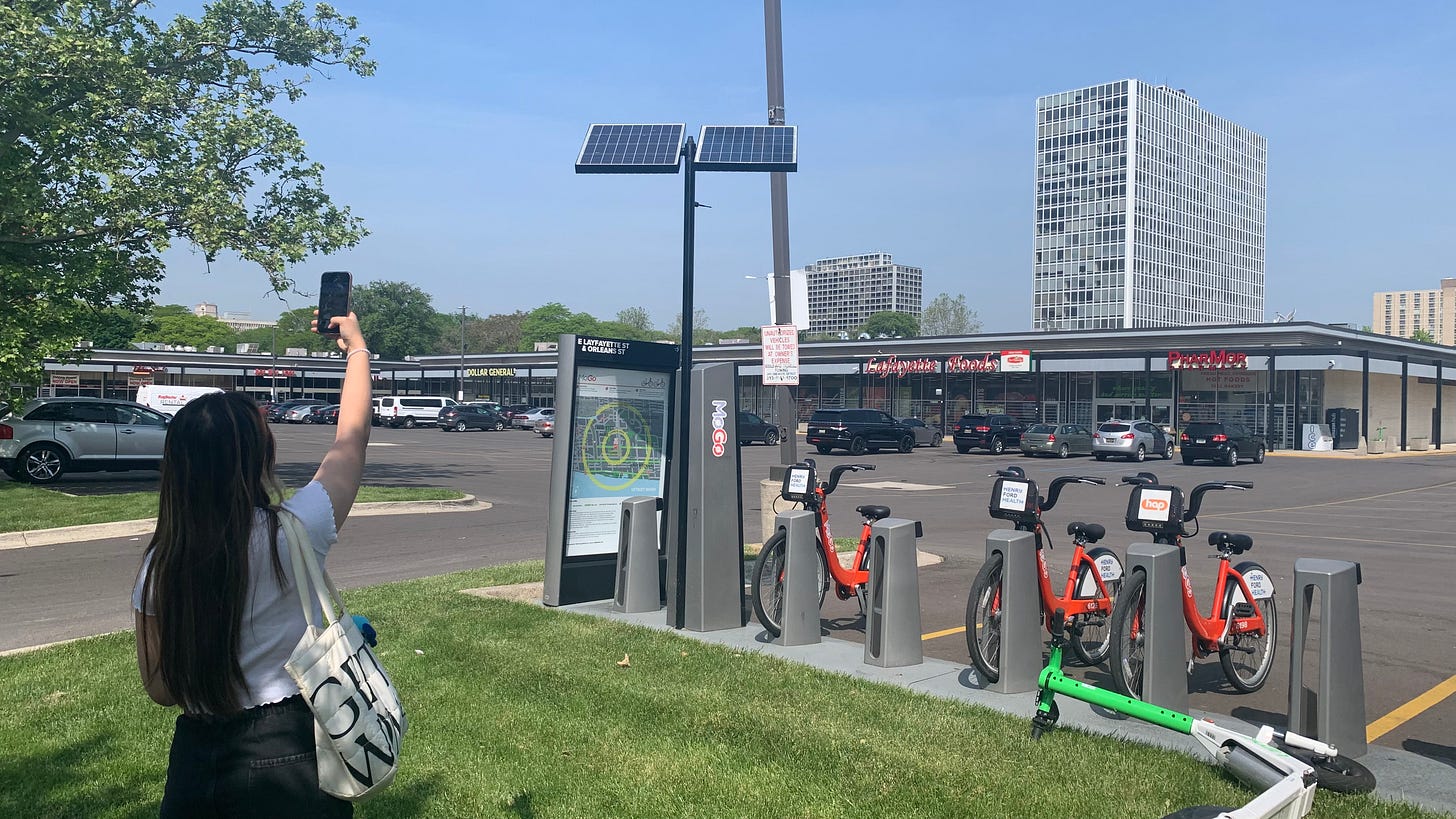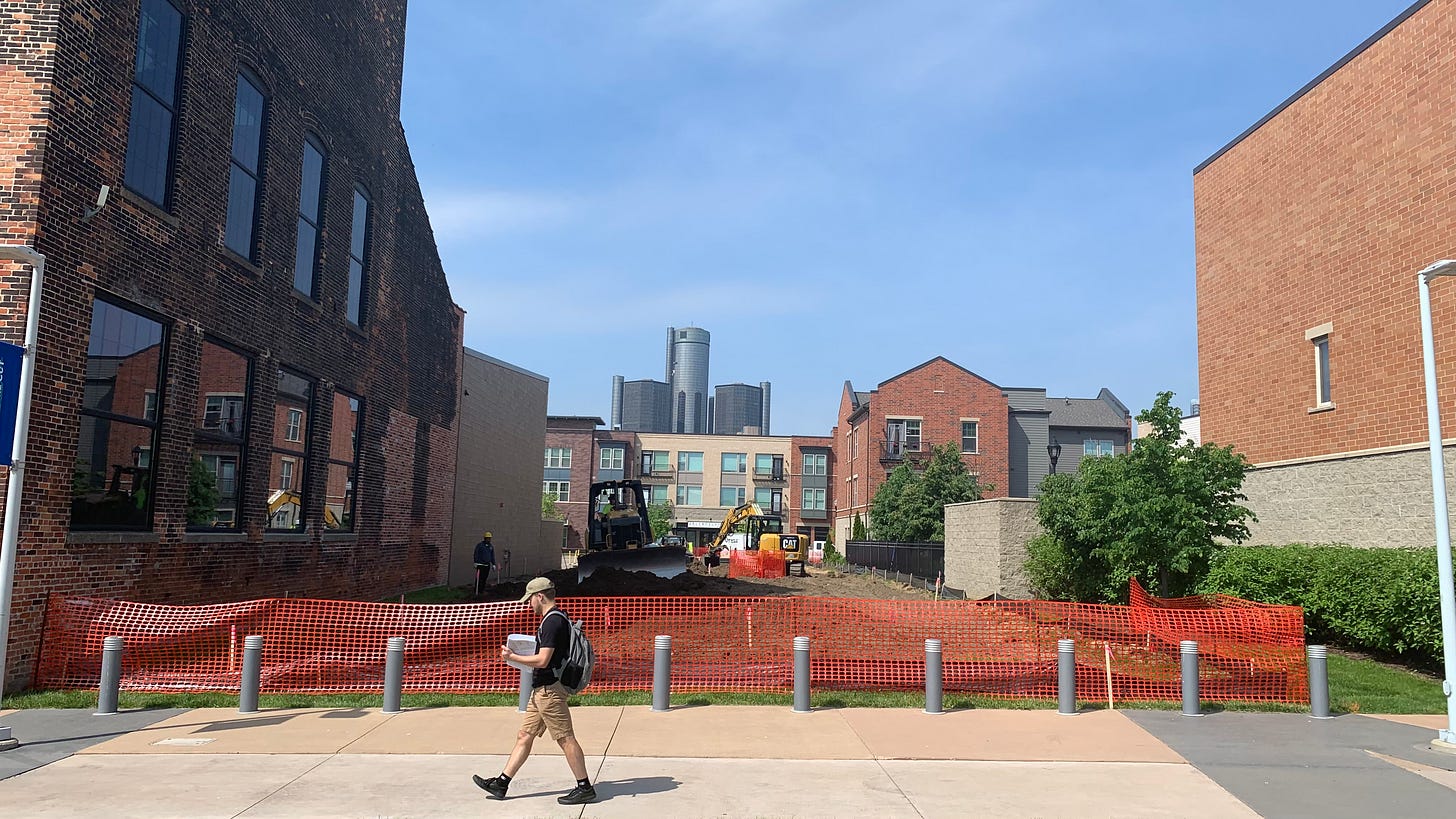Urban Technology at University of Michigan week 198
Parks, Warblers, and Urban Technologies in Detroit
For most University of Michigan students, May marks the beginning of summer break and a chance to take a breath and recharge. Not so for Urban Technology! We are in the thick of our “Cities Intensive,” a packed eight weeks where our first-year students are in the classroom – and out of it – to study urban systems and hone their observational and design skills.
You’ll be reading more about the Intensive in this space, starting today. Today’s newsletter is guest written by Phil D’Anieri, urban planner, author, and professor who is teaching in our Intensive for the third time this year. He’s been at the helm since our first trip to Toledo and has led subsequent excursions to Grand Rapids, Cleveland, and Chicago (twice).
Yesterday our students were in Detroit, where they visited parks and public spaces downtown. Traveling on foot, they spent the day investigating urban objects, annotating maps, and sketching notes wherever they went. I’ll turn it over to Phil to say more…
💬 Hello! This is the newsletter of the Urban Technology program at University of Michigan, in which we explore the ways that data, connectivity, computation, and automation can be harnessed to nurture and improve urban life. If you’re new here, try this short video of current students describing urban technology in their own words or this 90 second explainer video.
🌳 An Infrastructure of Nature
Our program’s Cities Intensive – something of a bootcamp for new students, immersing them in cities as they are and as they might be – took us on a day trip to nearby Detroit, where our goal was to investigate parks and the public realm. Students documented the everyday bits that make a space work, and they examined the roles that public space can play in city life.
We started at the Plaisance in Lafayette Park, a modernist’s notion of what a park is: open green space set amidst coolly efficient towers. The distinction embedded in that design – nature here, city there, with a clean line separating the two – has proven to be a stubbornly persistent way of looking at the world, even as the Modernist look itself fell out of and then back into style over the years.
Easy enough. But our next stop turned that worldview on its head. The Dequindre Cut is a linear park created from an abandoned sunken railroad line, and it is an amazing space in its quiet way. It’s not just a home for recreation along its paved path, but for public art along its leftover infrastructure, and for a view of the city from the perspective of its history. It is many things at once, past and present in a spontaneous dance with another.
It’s also a migratory bird habitat. Who knew? I sure didn’t, but as Emily Kutil, the Cities Intensive’s co-instructor, was speaking to the assembled students, an unusual, catchy birdsong emanated from the shrubby embankment behind her. Curious what might be singing, I opened my Merlin app, and in an Internet instant the answer came back: a Tennessee Warbler was in our midst. It was on its way from warmer climes in Central and South America up to its summer breeding habitat in Canada. Later in our walk, a Warbling Vireo, likely already arrived at its summer home, made its presence known.
Wildlife in Detroit, or any city for that matter, is not as rare as an old-fashioned notion of city-vs-country would make you think. So while these birds’ presence was an unexpected discovery in our journey, it wasn’t earth-shattering from either a birder’s perspective or our students’. (They listened…politely…as I called their attention to the warbler’s song.)
But here’s the thing: unexpected discoveries are a huge part of what makes a city’s public spaces what they are. It is the happenstance alchemy of lots of different things occurring at once – the human and the built and the natural, intersecting in unpredictable ways – that continues to define the public realm, perhaps never more so than in our increasingly digital age.
“What is urban technology?” is something we hear a lot in these parts. It’s one of those interesting questions that has a lot of useful answers, but no single, authoritative one. I’d say the birding app counts as an urban technology because that traveling warbler was as much a part of the city as I was at that point in time; arriving as a pleasant surprise made it more urban, not less, in my book. And any tool that helps us appreciate the full spectrum of reality and possibility in our human environments is, I would argue, a pretty good thing.
🖼️ Postcards from Detroit
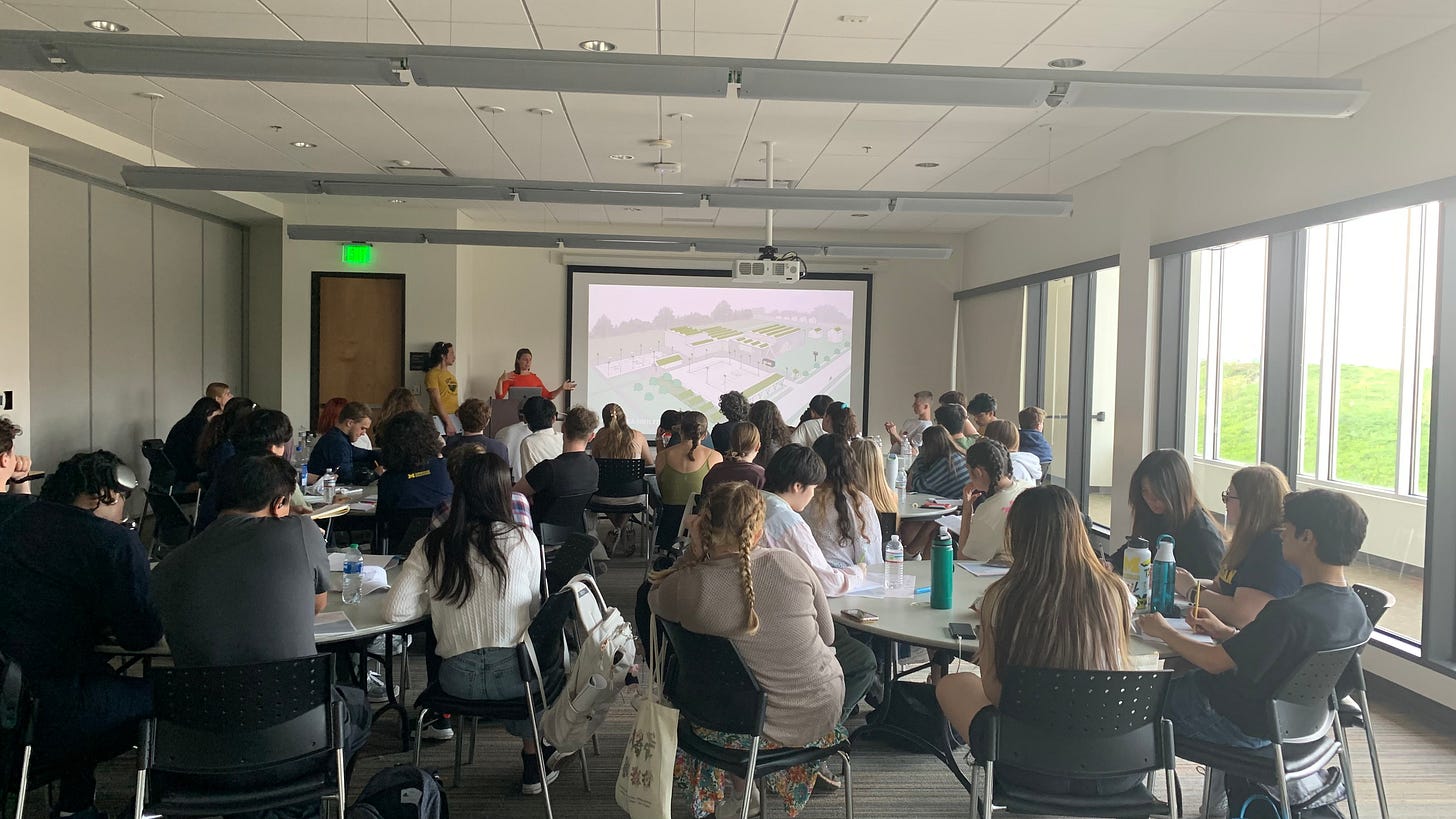
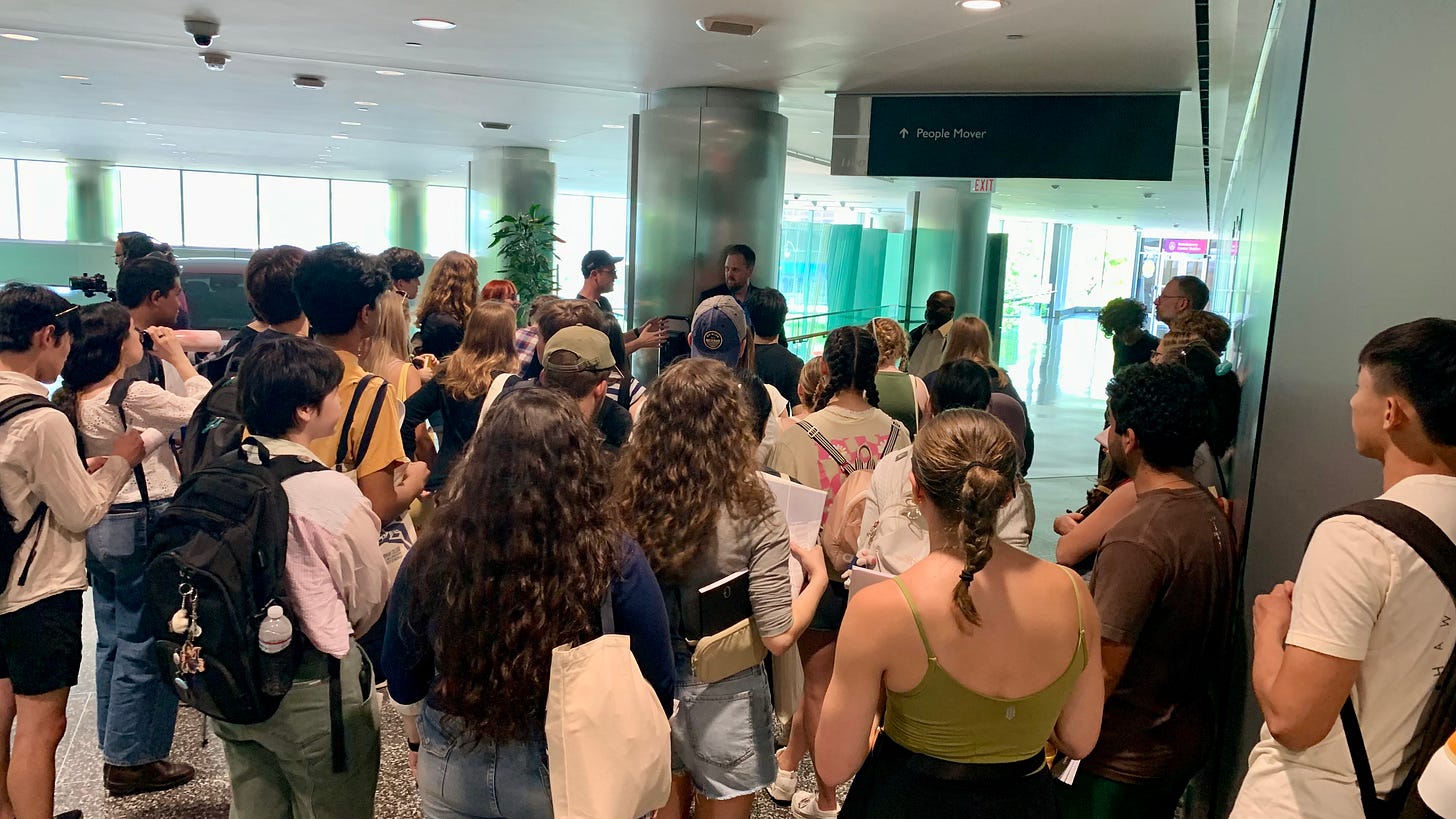
These weeks: Space planning. Hiring. Spring semester begins, which means donuts. Trip one is done! Gearing up for trips two and three. 🏃

